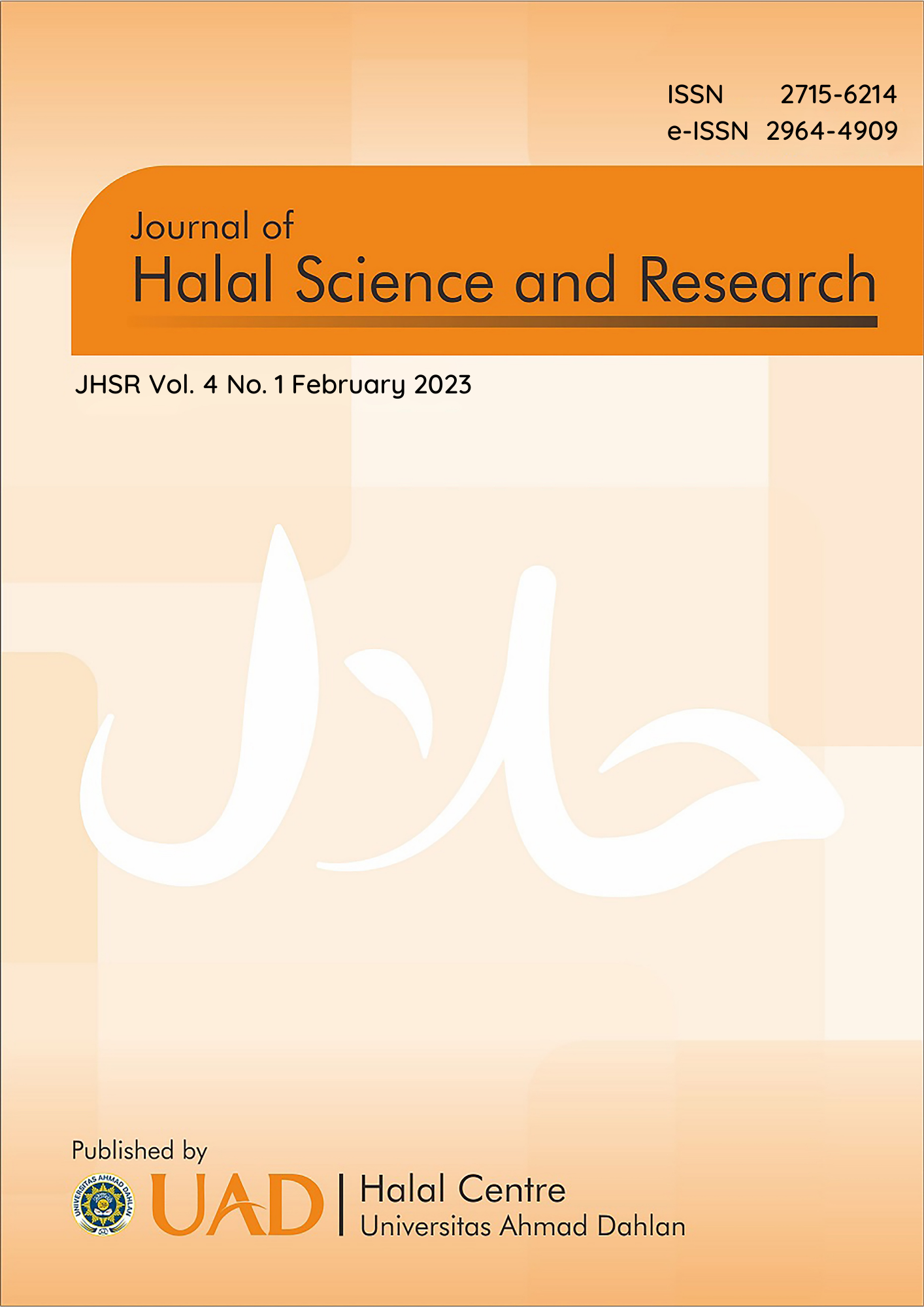Rosella (Hibiscus sabdariffa L.) extract lip balm: optimization of the composition of beeswax and paraffin wax as a base
DOI:
https://doi.org/10.12928/jhsr.v4i1.6976Abstract
One of the main components of lip balm is wax. The wax content in the lip balm works to improve the consistency. In this study, a lip balm was prepared to contain rosella flower extract (Hibiscus sabdariffa L.), which contains anthocyanin and can be used as a natural dye. This study aimed to determine the effect of the combination of beeswax and paraffin wax as a wax base on the physical properties and physical stability of lip balm containing rosella flower extract (Hibiscus sabdariffa L.) so that the optimum composition can be obtained. Rosella flower extract (Hibiscus sabdariffa L.) was prepared by maceration method using 96% ethanol. The extract was formulated in eight formulas with variations of beeswax-paraffin wax and evaluated for physical properties (organoleptic, pH, melting point) and physical stability (organoleptic, pH every week). The optimum formula was obtained using a Simplex lattice design (SLD) with the help of Design-Expert® 10.0.1 software. The results of the simplex evaluation test using the one sample t-test at a 95% confidence level indicate that beeswax has a dominant influence in influencing pH and decreasing pH with design expert coefficient values of 2.09 and 0.50. Meanwhile, paraffin wax has a dominant influence on the melting point with a design expert coefficient value of 0.89. The composition of the two waxes did not affect the shape, texture, color, and scent based on organoleptic observations. The optimum formula for combining beeswax and paraffin wax is 8.02% and 12.31% to produce a product with a pH of 3.91, a melting point of 65.51ºC, and the ability to maintain the pH for four weeks.
Downloads
Published
Issue
Section
License
Copyright (c) 2023 Universitas Ahmad Dahlan

This work is licensed under a Creative Commons Attribution-NonCommercial-ShareAlike 4.0 International License.
Authors who publish with JHSR (Journal of Halal Science and Research) agree to the following terms:
1. Authors retain the copyright and grant Universitas Ahmad Dahlan right of first publication with the work simultaneously licensed under a Creative Commons Attribution-NonCommercial-ShareAlike 4.0 License (CC BY-NC-SA 4.0) that allows others to share (copy and redistribute the material in any medium or format) and adapt (remix, transform, and build upon the material) the work for any purpose, even commercially with an acknowledgement of the work's authorship and initial publication in Universitas Ahmad Dahlan.
2. Authors are able to enter into separate, additional contractual arrangements for the non-exclusive distribution of the journal's published version of the work (e.g., post it to an institutional repository or publish it in a book), with an acknowledgement of its initial publication in Universitas Ahmad Dahlan.
3. Authors are permitted and encouraged to post their work online (e.g., in institutional repositories or on their website) prior to and during the submission process, as it can lead to productive exchanges, as well as earlier and greater citation of published work (See The Effect of Open Access).

This work is licensed under a Creative Commons Attribution-NonCommercial-ShareAlike 4.0 International License.




